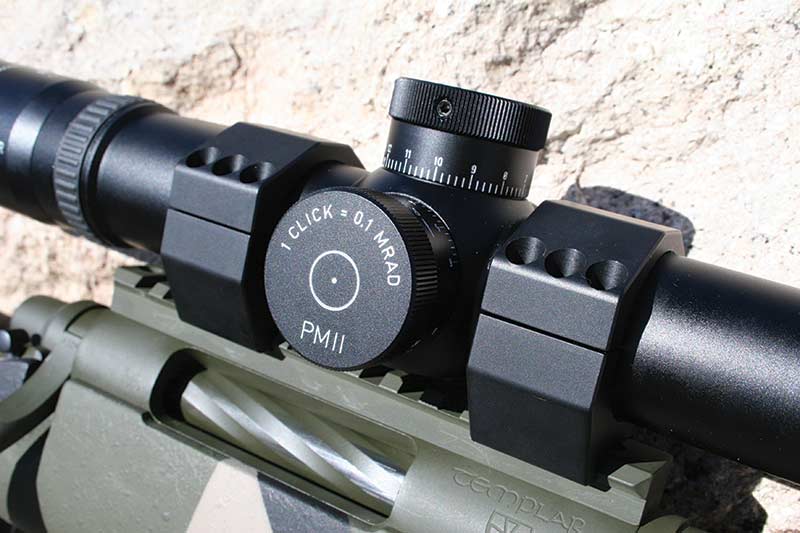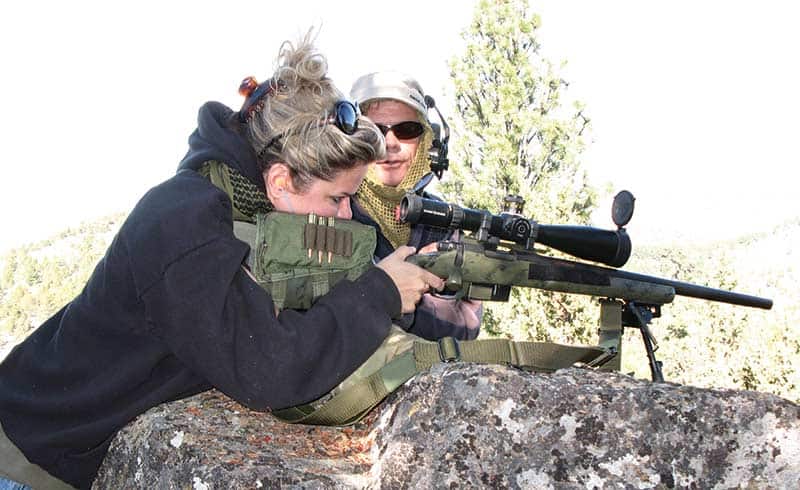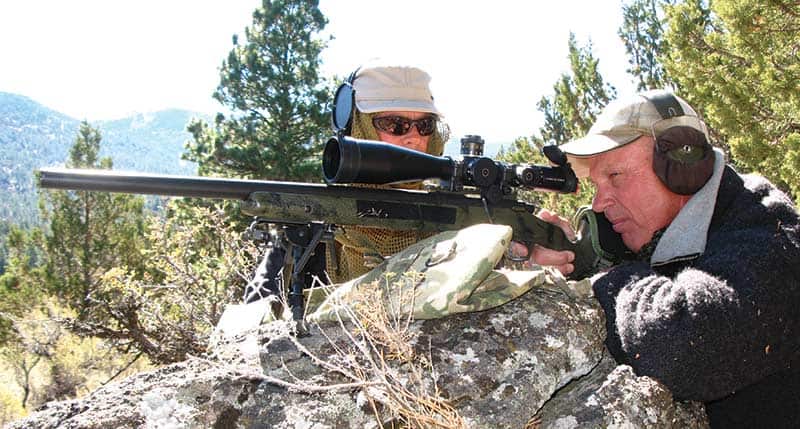Nuts, Bolts, Scopes & Dopes
Taking The Mystery Out Of Using Scopes
I am often asked what technique or system is the best. My response is to try them all and pick the one that works best for you. A reader’s digest version of how to get the most from your scoped rifle. That said, I am only writing about what I have personally experienced. I acknowledge there are other systems or ways, but these are the ones I’m familiar with.
MOA World
I have always shot Leupold scopes and loved them. The Beaverton folks make great gear and I can’t even start to remember how many of the gold ringed tubes I have looked through as I fired countless rounds over the last four decades. As I grew older I also grew into the more sophisticated part of the product line and of course as I got older the product line got better, as Leupold’s always have. The Leupold scopes have generally been set to adjust on the minute or some portion of a minute of angle scale or system. In reality the adjustment of a minute of angle is generally considered to equate to one minute or subtends one inch at one hundred yards is actually an approximate number, as a correct minute is a bit more — 1.047″ — but then we fall into the expert mode that I am not in.
My basic definition would be one minute of angle would represent 1″ at 100 yards. As the range incrementally increases the minute of angle grows to subtend or represent an appropriately larger area such as in one minute of angle at 500 yards equates to and
subtends 5″ at 500 yards. At 1,000 yards one minute of angle represents or subtends to 10″. As a brief test then in your mind’s eye a half of minute of angle group that was fired at 600 yards would equate to a group size of 3″.
The gun magazine favorite of “it shoots a quarter minute at 100 yards” then equates to or means the projectiles all being placed inside 1/4″.
The Mil Deal
The mil subtends or represents 3.6″ at 100 yards. Mils aren’t necessarily more precise measuring increments and much of the confusion stems from whose system we are using. The average confused person has read much of the stuff about the different versions used by different folks. All of it is a moot point as the correct measurement is 3.6″ at 3,600″, which of course is 100 yards.
Mil Range Adjust Shoot
Subtle tactical point: if you want to use mils effectively to range and engage the target, the size of the target to be impacted can be a very helpful critical piece of information.
I started shooting Schmidt & Bender scopes awhile back after hanging around Frank the Bigfoot Hunter and the cool thing is for me
to shoot my GAP rifle and S&B scope right along side wife Heidi with her identical gear. One of us shoots and one of us spots, calls and adjusts impacts, sort of a fire control gig. Heidi’s GAP rifle and scope are identical to mine so we see the same images and shoot the same ammo so about now you could see if I shot and she watched, she can and does adjust and shoot off of my fired round and or impact on or off the target. This makes for a pretty quick second shot down range. The shot is marked in impact. The correct adjustment is verbalized in tenths and the corrected number two shot is out and away quickly. The asset of the mil system is the trace (vapor trace of the bullet in flight) and impacts can be adjusted on very quickly for second shots and they are at the same time very precise adjustments.
The Mil Mistress
Another very critical point is that Heidi has an eye for reading mils, a really good eye in fact. It helps us place lots of first round hits on target because of the precise information she can formulate off the readings. She is reading the mils to the tenth and
in some cases to the hundredth and giving readings within 2 or 3 yards at 900 … and she does it a lot.
Heidi and I have tinkered with small computers and the excellent Mil-Master sliding card like system. About now it’s important to point out I bought a very, very good laser range finder with the help of Jacob Bynum of Rifles Only. The laser gives you rock solid range to target information helping you acquire skills in range estimation mil info and the math conversions to come up with the dope I put in the scope to launch to rounds.
So the scope dope skills are acquired over time and acquired even quicker if backed by good base line gear helping you learn and cross reference the info you see in the scope or on the computer to what is dialed into the scope.
Mil Need For Speed
Another strong point of the mildot scope is with practice exposed targets can be ranged quickly at modest ranges and engaged without dial-adope. The more you practice at the longer the ranges the more you can be effective at it. This addresses in my mind’s eye danger close environments from 0 to 400 yards. With this thought in mind, if you know your rifle and your bullet drop, exposed targets should be hit reasonably well.
An example of using danger close threat hold off would be with a 100 yard zero on the rifle and a mildot scope. The need for a hit “now” on a moderately sized target at 400 yards can be accomplished by simply holding two and two tenths mils high over the target from the normal center of the cross wire, and press.
Mil Need For Speed
Another strong point of the mildot scope is with practice exposed targets can be ranged quickly at modest ranges and engaged without dial-adope. The more you practice at the longer the ranges the more you can be effective at it. This addresses in my mind’s eye danger close environments from 0 to 400 yards. With this thought in mind, if you know your rifle and your bullet drop, exposed targets should be hit reasonably well.
An example of using danger close threat hold off would be with a 100 yard zero on the rifle and a mildot scope. The need for a hit “now” on a moderately sized target at 400 yards can be accomplished by simply holding two and two tenths mils high over the target from the normal center of the cross wire, and press.
Minutes Of Angle
For most people, if you know the range to the target either by documentation or laser reading you get the best results down range when you dial known data into your scope and shoot it. This of course only deals with bullet drop and the shooter must still deal with the current wind issues while firing. If the range to the target is 600 yards, put 16 minutes (MOA) of up elevation into the riflescope and it will impact really close to the point of aim.
Scope Stuff
A point to consider when you select a scope can be what type of system it is. A First Focal Plane is when the reticle changes size as the magnification is changed on the scope. On a Second Focal Plane scope the reticle doesn’t change as the magnification is changed. Another subtle point here is on Frontal Focal Plane scopes the reticle correctly subtends on all powers which can help if one needs to power down, whereas Second Focal Plane scopes have to be on maximum power to have the reticle subtend correctly which can also limit the field of view while working.
I personally like the first plane system since it changes when I run it to a higher power for longer-range targets and the reticle size “stays” with me. The mildot dot versions have several different kinds and sizes, it can get confusing but I opt for the round and the mildot that subtends 0.2 mils. Leupold has their Tactical Milling Reticle and it has some strong points in that you can see “through” the lines at long ranges whereas the mildot might “block” the projectile impact strike visually at range. Much of this is a personal choice with each forum or chat room expert. Then I remember the words in part of President John Kennedy’s speech after the Bay of Pigs fiasco, “All my life I’ve known better than to depend on experts.”
Scope Dope
I shoot .308 rifles and either 168 or 175-grain Sierra bullets at 2,650 fps. The hue and cry say 175s are better, yet here at my elevation I still get my money’s worth out of the 168s at ranges beyond 800. Listed below is some data for scopes adjustments in minutes of angle and for scopes adjustments in mils. This is general information and reference data for rifles base line zeroed at 100 yards. All are “up” adjustments with no wind considerations. The last column is bullet drop off the 100 yard zero.
Review The View
After doing this for a limited time and admitting up front I don’t know it all, I do know I am using the same unit of measure for both the reticle and the scope adjustments. The Mil to Mil system is best for me as the one full Mil and or down to .1 Mil adjustments, though a small and fine adjustment, can make a big difference when applied down range at 900 and something yards. The ease of my PMII Schmidt & Bender single turn scope is that one Mil is one Mil consisting of ten clicks of .1 Mil and it works for me and I like it.
Other Stuff
There is an old adage “book smart doing dumb.” I have worked on being book smart to a certain degree, but even more importantly I have worked on doing stuff smart as well… and how smart is yet to be determined. Much of this information and how it is applied to shooting isn’t going to be gained by reading and chat room forums and the opinions of people you don’t know. Personally my best teacher has been lying in the dirt on a 6,000 +/- foot ridge with the air in your hair pressing a trigger. If you’ve got a girlfriend who is really good at reading mils, take her along — it’s helpful.
Special thanks to: Heidi the Mil Mistress and Frank “BFH” Galli at Sniper’s Hide; he helped a lot with this piece.
GUNS Personal Defense

Sign up for the Personal Defense newsletter here:








